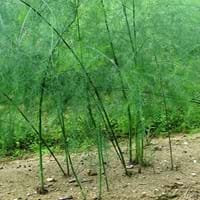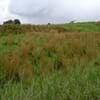Life Span
Perennial
Perennial
Origin
United States, Northeastern United States, Mid-Atlantic United States, Southeastern United States, North-Central United States, Central United States, South-Central United States, Texas
Southern Europe, Mediterranean
Types
Virginia water horehound
garden asparagus , Sprenger's asparagus fern, White asparagus
Number of Varieties
Not Available
Habitat
Along Railroads, Barren waste areas, Hill prairies, Mined land, Pastures, Roadsides, Rocky glades, Sandy areas, Upland, Upland clay prairies, Upland sand prairies, Upland sandy savannas, Upland savannas, Upland soils
Loamy soils, Well Drained
USDA Hardiness Zone
5-8
4-8
Sunset Zone
Not Available
A1, A2, A3, 1a, 1b, 2a, 2b, 3a, 3b, 4, 5, 6, 7, 8, 9, 10, 11, 12, 13, 14, 15, 16, 17, 18, 19, 20, 21, 22, 23, 24
Habit
Clump-Forming
Not Available
Flower Color
Not Available
White, Gold
Flower Color Modifier
Bicolor
Bicolor
Fruit Color
Not Available
Yellow green, Orange Red
Leaf Color in Spring
Green
Green, Dark Green
Leaf Color in Summer
Light Green
Green, Purple
Leaf Color in Fall
Orange, Tan, Brown
Green, Purple
Leaf Color in Winter
Tan, Sandy Brown
Not Available
Leaf Shape
Grass like
Lanceolate
Plant Season
Summer, Fall, Winter
Spring, Summer, Fall
Sunlight
Full Sun, Partial Sun, Partial shade
Full Sun
Growth Rate
Fast
Not Available
Type of Soil
Loam, Sand
Loam, Sand
The pH of Soil
Acidic, Neutral, Alkaline
Neutral, Alkaline
Soil Drainage
Well drained
Well drained
Bloom Time
Early Fall, Fall
Late Spring, Early Summer, Summer
Tolerances
Pollution, Drought
Full Sun, Humidity, Shallow soil
Where to Plant?
Ground
Container, Ground
How to Plant?
Divison, Root Division, Seedlings
Stem Cutting
Plant Maintenance
Medium
Medium
Watering Requirements
Average Water Needs, Medium
Keep the Soil well drained, Requires regular watering
In Summer
Lots of watering
Lots of watering
In Spring
Moderate
Moderate
In Winter
Average Water
Average Water
Soil pH
Acidic, Neutral, Alkaline
Neutral, Alkaline
Soil Type
Loam, Sand
Loam, Sand
Soil Drainage Capacity
Well drained
Not Available
Sun Exposure
Full Sun, Partial Sun, Partial shade
Full Sun
Pruning
Remove damaged leaves, Remove dead branches, Remove dead leaves
Cut away fading foliage
Fertilizers
All-Purpose Liquid Fertilizer
14-14-14 Fertilizer, 8-8-8, All-Purpose Liquid Fertilizer, organic fertlizers
Pests and Diseases
Red blotch
Crown rot, Foliage miners, Fusarium wilt, Leaf rust, Mites, Red blotch, Thripes
Plant Tolerance
Drought
Full Sun, Heat Tolerance, Shallow soil
Flowers
Insignificant
Insignificant
Flower Petal Number
Single
Not Available
Edible Fruit
No
Not Available
Fragrant Flower
No
Not Available
Fragrant Fruit
No
Not Available
Fragrant Leaf
No
Not Available
Foliage Texture
Fine
Fine
Foliage Sheen
Matte
Not Available
Attracts
Birds, Butterflies
Beetles, Bugs, Fishes
Allergy
Pollen
allergic reaction, Mouth itching, Phytodermatitis, Rhinoconjunctivitis
Aesthetic Uses
Not Used For Aesthetic Purpose
Beautification, Showy Purposes
Beauty Benefits
Not Available
Anti-ageing, Makes Hair Silkier, Promotes healthy skin
Edible Uses
Insignificant
Yes
Environmental Uses
Air purification, Food for birds, Wildlife
Indoor Air Purification, Provides ground cover
Medicinal Uses
Back pain, Diarrhea, Frostbite, Itching, Piles, Sore Eyes, Sore throat
Acne, Anemia, Menstrual Disorders, Nerve pain, Vitamin B, Vitamin E
Part of Plant Used
Root, Seeds, Stem
Shoots, Stem
Other Uses
Cattle Fodder, Used As Food, Used as Ornamental plant
Air freshner, Employed in herbal medicine, Leaves are used as mosquito repellent, Used for making wood alcohol
Used As Indoor Plant
No
Sometimes
Used As Outdoor Plant
Yes
Yes
Garden Design
Dried Flower/Everlasting, Wildflower
Edible, Herb / Vegetable
Botanical Name
ANDROPOGON virginicus
ASPARAGUS officinalis 'Jersey Knight'
Common Name
Broomsedge, Broomsedge Bluestem
Asparagus, Jersey Knight Asparagus
In Hindi
Broomsedge grass
शतावर
In German
broomsedge Gras
Gemüsespargel
In French
broomsedge herbe
Asperge
In Spanish
hierba Broomsedge
Asparagus
In Greek
Broomsedge γρασίδι
σπαράγγι
In Portuguese
Broomsedge grama
Asparagus
In Polish
Broomsedge trawy
Szparag lekarski
In Latin
Broomsedge herba
Asparagus
Phylum
Magnoliophyta
Magnoliophyta
Class
Liliopsida
Liliopsida
Order
Cyperales
Asparagales
Genus
Andropogon
Asparagus
Clade
Angiosperms, Commelinids, Monocots
Angiosperms, Monocots
Tribe
Andropogoneae
Not Available
Subfamily
Panicoideae
Asparagoideae
Number of Species
Not Available
Season and Care of Broomsedge and Asparagus
Season and care of Broomsedge and Asparagus is important to know. While considering everything about Broomsedge and Asparagus Care, growing season is an essential factor. Broomsedge season is Summer, Fall and Winter and Asparagus season is Summer, Fall and Winter. The type of soil for Broomsedge is Loam, Sand and for Asparagus is Loam, Sand while the PH of soil for Broomsedge is Acidic, Neutral, Alkaline and for Asparagus is Neutral, Alkaline.
Broomsedge and Asparagus Physical Information
Broomsedge and Asparagus physical information is very important for comparison. Broomsedge height is 60.96 cm and width 30.48 cm whereas Asparagus height is 60.00 cm and width 60.00 cm. The color specification of Broomsedge and Asparagus are as follows:
Broomsedge flower color: Not Available
Broomsedge leaf color: Green
Asparagus flower color: White and Gold
- Asparagus leaf color: Green, Dark Green
Care of Broomsedge and Asparagus
Care of Broomsedge and Asparagus include pruning, fertilizers, watering etc. Broomsedge pruning is done Remove damaged leaves, Remove dead branches and Remove dead leaves and Asparagus pruning is done Cut away fading foliage. In summer Broomsedge needs Lots of watering and in winter, it needs Average Water. Whereas, in summer Asparagus needs Lots of watering and in winter, it needs Average Water.





